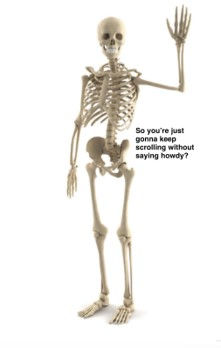Of Mammalian Stances
- tyker21
- Nov 20, 2019
- 3 min read
We are all familiar with Mammals. I am a mammal; you - the reader - are a mammal. If you have been chased by a pet dog or cat, chances are you have encountered a mammal too. Several are intimately woven into our everyday life. A casual stroll to some city commons leads to several squirrels scurrying about in trash cans; a visit to a state park could end up in scared deer running for their lives and leaving you stumped.
The dog chasing, a squirrel scurrying, and deer running have one thing in common: they use highly specialized limbs for the lifestyle that they lead. A dog lunges at its prey in a digitigrade stance, a squirrel nibbles on nuts in a plantigrade stance, while the deer balances its body on its fingers in an unguligrade stance. Each of these adapted and evolved so that they could perform a specific function which would give them an advantage to other animals in their ecosystem - be it predator, prey or competitor. In this article I take a look at the three stances in a bit more detail.

As can be seen from the above picture, the plantigrade stance has most of the moving joints of the leg (finger bones, palm bones, wrist bones and their associated joints) are arranged completely flat against the ground. It gives a higher degree of stability and support to the body of its users, but sacrifices speed. As a result, the animals with this stance are able to support their body on two legs and free up their front limbs for additional functions and make up for some very interesting pictures:

Does the posture of bears and sloths seem familiar? That’s because it is the same exact build as us humans. More on that in a future blogpost.

On the other hand, digitigrade and unguligrade stances are built for speed as opposed to stability. Digitigrades like panthers, coyotes, and foxes are powerful predators and are known to chase down their prey. A small number of bones and joints in contact with the ground minimizes the contact it would have with it. In addition, the springy construction of the hind limbs enables efficient storage and release of energy, which is ideal for providing short bursts of energy and chasing down prey.

Even humans, especially those in the 100m dash on olympics, temporarily assume this gait to gain an initial burst of speed before settling down to the plantigrade gait.

Ungulates take it even further and simply balance their entire body on some super-strong nails really. Hooves are highly modified fingers and toes. Think of your index or middle finger - but enlarged so that its the only finger in the hand. The remaining fingers shrink and form vestigial appendages in today's hooved animals. These hooves seem to be exclusive to placental mammals and are not found in any other animal group.

Digitigrade stance however, has been observed in dinosaurs, birds, and other reptile species too and might be the 'default' stance for a tetrapod, with unguligrade and plantigrade stances derived from the original fish that crawled out of the water.
So the next time you come across a mammal, bird, or even an amphibian, always ask the question, what stance is does it assume?

Until next time, cheers.


Comments